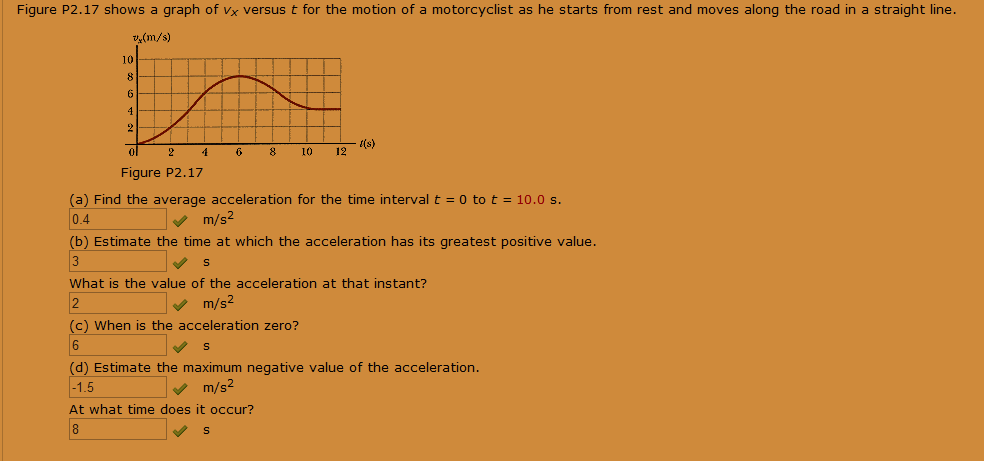Can someone explain how to get these answers? ( Velocity/Acceleration Question)

Need Explanation Please.

Need Explanation Please.
1 Answer
(a) Average acceleration
From the figure.
Inserting these values in above equation we get
Average acceleration
(b) Maximum positive value of acceleration will occur when rate of change of velocity in increasing sense (slope of the velocity-time curve) is maximum positive. From the figure we see that this occurs at
(c) Acceleration is zero when rate of change of velocity is zero. Or the velocity-time graph becomes parallel to the
(d) Maximum negative value of acceleration will occur when rate of change of velocity in decreasing sense (slope of the velocity-time curve) is maximum negative. From the figure we see that this occurs at
